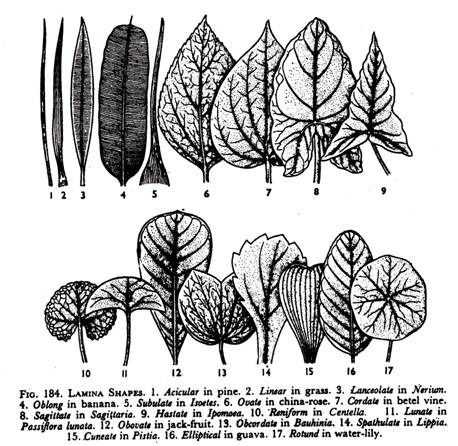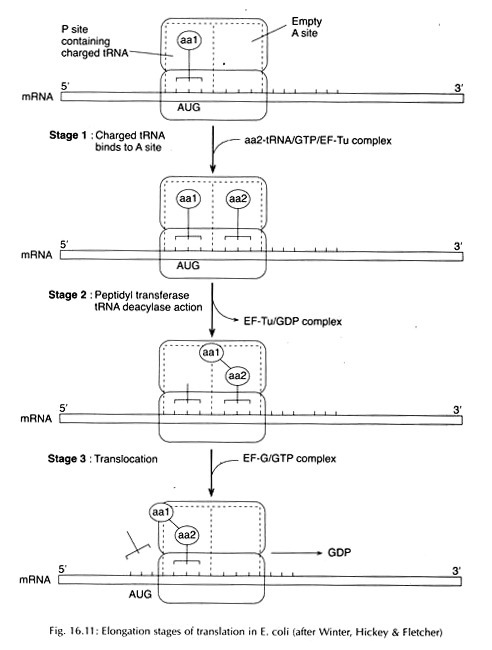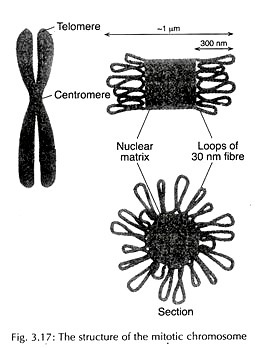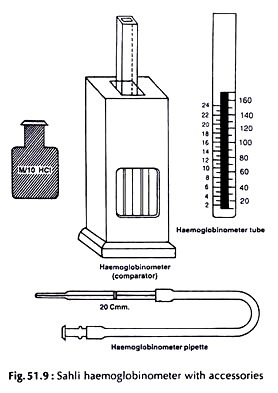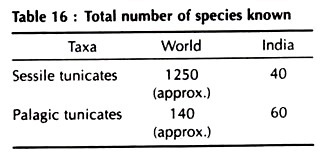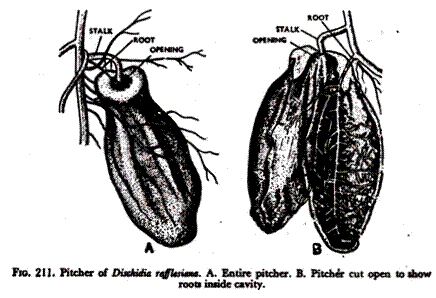The Lamina (Epipodium) of A Leaf (With Diagram) !
A leaf lamina should be studied from the following aspects:
(1) Shape;
(2) Base;
(3) Margin;
(4) Apex;
(5) Surface;
(6) Texture;
(7) Colour;
(8) Odour;
(9) Taste;
(10) Venation;
(11) Leaf incision and
(12) Whether simple or compound.
I. Shape:
The shape or outline of the lamina is merely a description of its form. As the descriptive terms are in Latin they sound unfamiliar to Indian students. The lamina shape may be;
(a) Narrow throughout:
(1) Acicular—needle-shaped as in pine.
(2) Linear—longer and slightly broader as in many grasses, tuberose, etc.
(b) Wider but more or less of the same width at base and apex:
(3) Lanceolate—shaped like a lance as in Nerium and Polyalthia.
(4) Oblong—more or less rectangular as in banana (Musa sp.).
(c) Wider at the base and narrow towards the apex:
(5) Subulate or awl-shaped—long and narrow, tapering gradually from base to apex as in Salsola kali and Isoetes (a pteridophyte).
(6) Ovate or egg-shaped—as in china-rose and banyan.
(7) Cordate or heart-shaped –with a deep notch at the base as in betel vine (Piper betle).
(8) Sagittate—shaped like an arrowhead with the two basal lobes pointing towards the base as in Sagittaria sagittifolia and in arum.
(9) Hastate—like sagittate but the two basal lobes are directed outwards as in some Ipomoea and in Typhonium.
(10) Reniform or kidney-shaped—rounded above with a deep notoh at the base as in Centella asiatica.
(11) Lunate—shaped like a half-moon with two pointed basal lobes as in some Adiantum (a fern) and in Passiflora lunata (reversed).
(d) Wider at the apex:
(12) Obovate—reverse of ovate as in jack-fruit or Terminalia catappa.
(13) Obcordate—reverse of cordate with an apical notch as in Batihinia.
(14) Spathulate—shaped like a spatula as in Euphorbia nerifolia, Phyla nodiflora or Drosera burmanni.
(15) Cuneate or wedge-shaped as in Pistia stratiotes.
(e) Symmetrical lamina:
(16) Elliptical—like an ellipse as in Vinca rosea, guava and India-rubber.
(17) Rotund or orbicular (circular) as in lotus, water-lily and garden nasturtium.
(f) Incised forms:
Besides the shapes considered above leaves may be shaped differently by incision of the leaf lamina.
II. Base:
The base of the lamina is often notched and the two lobes of the lamina are extended downwards. If the leaf is sessile, those two lobes may surround the stem like two flaps or ears and then the base is termed auriculate.
This is seen in Calotropis procera. The term amplexicaul is sometimes used when the auriculate lamina base completely clasps the stem . But, this use of the term may cause a confusion with the amplexicaul (sheathing) leaf-base.
If the basal lobes fuse together after completely clasping the stem it seems that the stem has perforated the leaf. This is called perfoliate and is found in Aloe perfoliata, Pladera perfoliata, Bupleurum, etc.
Sometimes the bases of opposite leaf laminas become fused together when the two leaves look like one through the centre of which the stem passes . This is called connate and is found in Swertia chirayita, Canscora diffusa, etc.
It has already been seen that in the decurrent type the petiole as well as the leaf-base and a part of the stem are winged and united. The base of the lamina also is united and continuous with this so that the beginning of the lamina cannot be clearly demarcated.
III. Margin:
The margin of the lamina may be :
(1) Entire—when the margin is smooth as in mango.
(2) Repand—margin wavy as in Polyalthia.
(3) Serrate—margin with teeth pointed upwards as in a saw, e.g., china-rose, rose, etc.
(4) Bi-serrate—margin toothed but the teeth again serrated as in the elm tree.
(5) Retroserrate—the teeth are pointed downwards.
(6) Dentate—margin toothed, the teeth are pointed outward, i.e., at right angles, e.g., water-lily.
(7) Bi-dentate—margin toothed and the teeth are again dentate.
(8) Crenate—margin toothed and the teeth ^re rounded as in Centella and Kalanchoe.
(9) Bi-crenate—margin toothed and the teeth are again crenate.
(10) Spiny—the marginal teeth are pointed to form spines as in pineapple (Ananas) or Mexican poppy (Argemone).
(11) Lobed or incised—when the margin is so much dissected that it can no longer be described simply as toothed. There are various types of lobing or incision which ate discussed later in connection with leaf incision.
IV. Apex:
The apex of the lamina may be :
(1) Acute—when pointed and narrow as in mango.
(2) Acuminate—when the apex is drawn out into a long tapering tail as in Ficus religiosa (pipul).
(3) Obtuse—when the apex is broad angled and blunt as in banyan.
(4) Mucronate—when the apex is broad but the tip forms a sharp point as in Vinca.
(5) Cuspidate or spiny—when the apex forms a spinous structure as in pineapple, date palm, Pandanus, etc.
(6) Tendrillar—when the apex forms a tendril for climbing as in Gloriosa.
(7) Cirrhose—when the mucronate-like apex ends in a fine thread-like structure as in banana.
(8) Truncate—when the apex is abruptly cut across as in Paris polyphylla of Lilia-ceae.
(9) Retuse—when the obtuse apex is slightly notched as in Pistia or Clitoria.
(10) Emarginate—when the obtuse apex is deeply notched as in Bauhinia.
V. Surface:
The feel of the surface of the leaf may be:
(1) Glabrous—when smooth and without any hair, etc., as in mango.
(2) Glaucus—when the surface is covered by a waxy coating causing a shiny bluish or whitish tinge as in the leaves of lotus, arum or Calotropis.
(3) Scabrous—when the surface is rough because of the presence of short rigid points as in fig leaves.
(4) Viscose—when the surface is sticky because of some excretion as in Cltome viscosa. A similar case is the leaf of Nicotiana tabacum which is also sticky and is sometimes described as glutinous.
(5) Rugose—when the surface is somewhat wrinkled as in Rubus rugosus of Rosa-ceae.
(6) Gland-dotted—when glands are found on the leaf surface as in lemons.
(7) Hairy—when the surface is covered with hairs. These again may be of many types: (a) pubescent—when the hair is soft and woolly as in tomato; (b) pilose—when the hairs are long, distinct and scattered as in Grewia flavescens; (c) villose—when hairs are long, soft and closely arranged as in Leucas aspera; (d) tomentose—when hairs are short, dense and cottony as in Terminalia tomentosa, Calolropis procera, etc.; (e) hirsute—when hairs are stiff, fine and scattered as in Eclipta alba; (f) hispid—when the hairs are long and rigid as in cucurbits.
(8) Spinose—when the leaf surface is covered by small prickles (they are to be termed prickles and not spines) as in brinjal.
VI. Texture:
The texture of the leaf is:
(1) Herbaceous—r-when the leaf is thin and membranous as in china-rose and rose.
(2) Coriaceous—when it is firm and leathery as in mango.
(3) Succulent—when soft and juicy as in Kalanchoe. The leaves are more or less brittle.
(4) Gland-dotted—the presence and nature of glands (e.g., on lemon leaves) may be considered in connection with texture as well as in connection with lamina surface.
VII. Colour, Odour & Taste:
These characteristics of the lamina become important for identification when anything special is found. Such specialities are to be described in such cases.
VIII. Venation:
The fibrovascular tissue system supplying a leaf reaches the base of the lamina through the petiole and from this point it branches out or ramifies according to certain patterns. The ramifications are called veins and their arrangement is known as venation.
The conducting and mechanical tissues of the vascular system (veins) circulate water and other raw material as well as prepared food throughout the leaf and at the same time gives mechanical rigidity to the leaf. The veins, therefore, serve as a circulatory system as well as like a skeleton of the leaf. Venation is very clear on the lower surface of thin leaves.
Venation follows certain basic patterns. In lower plants like the Pteridophytes, the branching of the veins is dichotomous. The Angiosperm leaf shows two principal types of venation. In the first type the strong main veins give rise to finer branches which again branch repeatedly running into one another and forming a reticulum or network all over the leaf.
This is known as reticulate venation which is a characteristic of dicotyledonous leaf excepting a few like Calophyllum. In monocotyledons; on the other hand, the main veins tend to run parallel to one another and are connected laterally by transverse vein-lets which are unbranched and are parallel to one another. This is known as parallel or striate venation.
A few monocotyledons like some aroids, Smilax, Dioscorea, etc., however, show reticulate venation. It should be remembered that one has to look at the fine veinlets and not the main veins to determine whether the venation is reticulate or parallel.
A. Reticulate Venation :
The reticulate type of venation shows two variations;
(a) Unicostate or Pinnate:
This type of venation may be likened to racemose branching. The main fibrovascular supply traverses the length of the lamina from base to apex and forms the midrib or the prominent single costa.
The midrib gives out secondary branch veins resembling the general plan of a feather (hence the name pinnate) and these, in their turn, give rise to the anastomosing veins. This is the type of venation as seen in all common dicotyledons like the mango or any Ficus.
The secondary veins often do not reach the margin but before reaching the edge either fizzle out or curve and run parallel to the margin for a short length. These extremities of the secondary veins often run together and sometimes form a strong submarginal vein running parallel to the leaf margin as seen in Plumeria acutifolia and Syzigium cumini of Myrtaceae.
(b) Multicostate or Palmate:
In this type the vascular supply, after reaching the base of the lamina, breaks up into a number of equally strong veins or costas. Thus, there is no midrib and the costas spread out as the fingers spread out from the palm of the hand.
Hence, the name palmate. Palmate venation, again, may be:
(i) Convergent:
when the prominent veins (costas) after spreading out from the base again converge towards the-tip of the lamina as in Zizyphus jujuba of Rhamnaceae and in the cinnamon leaf (Cinnamomum tamala ).
(ii) Divergent:
When the costas spread out farther and farther apart as in the cucurbits and china-rose.
B. Parallel or Striate Venation :
Parallel venation, similarly, may be unicostate or multicostate.
(a) Unicostate or Pinnate:
This may be seen in banana (Musa of Musaceae) or Canna of Cannaceae where there is a strong midrib giving rise to parallel branches which are joined by transverse veinlets which are again parallel to one another.
(b) Multicostate or Palmate:
Shoeing a number of strong veins (costas) which are
(i) Convergent in bamboos and grasses,
(ii) Divergent in fan palm (Borassus flabellifer of Palmaceae).
IX. Leaf Incision:
Simple & Compound Leaf:
It has been seen in connection with the lamina margin that the margin may be variously indented. This indentation is sometimes so prominent that the leaf is said to be incised or lobed. The pattern of leaf incision depends on the type of venation. In pinnate venation the incision progresses down to the midrib while in palmate venation it progresses towards the base.
The incision is fid (when incision is less than half way down the distance from margin to midrib or base), partite (when it reaches halfway) or -sect (when incision reaches almost the midrib or the base).
Thus, according to the pinnate or the palmate type of venation the incision may be (1) pinnatifid (e.g., poppy or chrysanthemum leaf); (2) pinnatipartite (e.g., Argemone mexicana); (3) pinnatisect (e.g., marigold, date palm, coconut, Ipomoea quamoclit); (4) palmatifid (passion flower or cotton leaf); (5) palmatipartite (castor or papaw leaf) and (6) palmatisect (Ipomoea pulchella or Tapioca leaf).
Among the pinnately incised types some leaves, like those of radish or mustard, show lobes which are irregularly incised. Usually the lobes towards the apex are larger. These are called lyrate leaves. Similarly, some palmately lobed leaves show the lobes arranged like the claw of a bird as in Cayratia pedata. These are called pedate leaves.
In extreme cases of leaf incision (e.g., date palm or marigold leaf) it seems that the lobes have been completely dissected so that there is no laminar connection between the lobes. A closer observation, however, shows that a very narrow lamina connects the lobes. If dissection goes on still further even this connection disappears so that the lobes become completely independent of one another.
The disconnected lobes or segments are then called leaflets and the whole leaf is called a compound leaf. The compound leaf again may be pinnate or palmate. As opposed to these compound leaves showing an extreme type of dissection, the ordinary entire or incised (including even the -sect types) leaves are known as simple leaves.
In a simple leaf the lamina, however dissected, will present a single appearance because of the presence of some sort of laminar connection between the dissected lobes.
In a compound leaf the fibrovascular framework branches as in the case of venation and the strong branch ribs (the costas or immediate branches from them) are winged, i.e., provided with lamina, forming leaflets.
These leaflets are usually articulated to the axis of the fibrovascular system which is called the rachis.
A compound leaf is sometimes confused with a twig bearing leaves. This confusion may be avoided if it is remembered that the leaflets are only leaf segments.
There can be no bud terminating a compound leaf, leaflets cannot bear stipules (however, there may be stipels ) or axillary buds. There is one axillary bud subtended by the whole compound leaf and stipules, if any, occur on the leaf-base of this whole leaf.
The whole compound leaf can never arise from the axil of another leaf which would have been the case if it were a twig.
A compound leaf, just like venation, may be pinnate or palmate.
A. Pinnate Compound:
In a pinnate compound leaf the rachis (which is actually the midrib) either bears the leaflets (also called pinnae) articulated directly along its two sides as in a feather or along the branches of this rachis.
The patterns may be as follows:
(1) Simple pinnate or Unipinnate:
Leaflets (usually in pairs) are borne directly on rachis.
(a) Paripinnate:
Leaflets are borne in pairs as in Tamarindus indica , different species of Cassia, Swietenia mahogoni, etc.
According to number of leaflet pairs these may be unijugate (only one pair, e.g., Zornia diphylla), bijugate (ground-nut), trijugate, etc.
(b) Imparipinnate:
The rachis is terminated by an unpaired odd leaflet as in rose , Clitoria (Papilionaceae), Murraya exotica (Rutaceae), Melia azadirachta (Meliaceae), etc.
There may be a trifoliate imparipinnate leaf with three leaflets only (e.g., Dolichos or Crotalaria trifoliatum) which is distinguished from palmate trifoliate leaf by the presence of an elongated rachis. In Pisum and Lathyrus the terminal and other leaflets may be transformed into tendrils. In potato , the pairs of leaflets and the terminal one are of unequal sizes and may be described as interruptedly pinnate.
(2) Bipinnate:
The pinnae are dissected again into pinnules so that the leaflets (pinnules) are borne not on die rachis but on its branches as in Acacia nilotica , Mimosa pudica, Caesalpinia pulcherrima, etc.
(3) Tripinnate:
Dissection goes to the third order so that the leaflets are found on secondary branches of the rachis as in Moringa oleifera of Moringaceae .
(4) Decompound:
When incision is of a higher order than in tripinnate as in carrot, anise, fennel (Foeniculum vulgare) and other plants of Umbelliferae .
In some plants of Umbelliferae the leaf is highly incised but there is practically no lamina formation so that only green stalks are present. This is the case in many aquatic plants as well.
B. Palmate Compound:
In palmate compound leaves the rachis does not develop at all so that all the leaves are articulated to a point on the top of the petiole.
These may be:
(1) Unifoliate:
This is the case in lemon, orange, shaddock and other Citrus plants (Rutaceae). Only a single leaflet is articulated to the top of the winged petiole. The articulation shows that the leaf is not a simple one but compound.
(2) Bifoliate Palmate or Binnate:
This type with only two leaflets articulated to the rachis is rather rare. This is found in Balanites aegyptiaca of Simarubaceae, Hardwickia binnata of Papilionaceae, Campsis grandiflora of Bignoniaceae, etc.
(3) Trifoliate or ternate:
Three leaflets are articulated in Aegle marmelos, Oxalis corniculaia, the genus Trifolium (clover), etc.
(4) Quadrifoliate Palmate:
This is another rare type found in the Paris plant (Paris quadrifolia ). The very common Pteridophyte Marsilea quadri-foliata presents a quadrifoliate appearance although the actual morphology of the four leaflets is not so simple.
(5) Digitate or Multifoliate:
If there be more than four leaflets as in the silk- cotton tree (Bombax ceiba of Bombacaceae ), Cleome viscosa and Cleome gynandra of Capparidaceae, horse chestnut (Aesculus hippocastanum), etc.
Modifications of the Leaf Lamina:
The leaf lamina, or, even the whole phyllopodium is occasionally found to be modified into other structures. Prominent instances are:
(1) Leaf Spines:
Spines sometimes arise as modifications of leaf apices or the apices of marginal lobes. These spines may be comparatively small as on the leaves of Argemone mexicana, Pineapple, Agave, Aloe, etc.
In the date-palm this spine is quite a hard structure. Development of spinous structures is a feature of the xerophytes. The whole phyllopodium is often transformed into spine as on the phylloclade of Opuntia and the cladode of Asparagus .
In lemons and oranges (Citrus spp ), the prophyll is a spine. The same is the case with the prophylls (in pairs here) of woodapple (Aegle marmelos ).
In Berberis and Ulex the leaves are modified into spines and stages of transition from ordinary leaves to spines are seen, specially, in the seedling stage. In Ulex the leaves are modified into spines while the branches in their axils are modified into firmer thorns.
(2) Leaf tendrils:
It has been seen in connection with tendril climbers that various organs of the plant may be transformed into tendrils. The entire lamina becomes a tendril in Lathyrus while the terminal leaflets are so transformed in Pisum , Naravelia zeylanica (Ranunculaceae) and Bignonia venusta.
The leaf apex becomes a tendril in Gloriosa superba. The tendril of Cucurbits may be a prophyll .
(3) Hooks:
Climbing hooks are sometimes modified leaves. In Macfadena unguiscati from Assam, the three terminal leaflets become claw-like hooks . The leaf spines on the main branches of Asparagus also act as hooks.
(4) Fleshy leaves:
Some leaves, specially in xerophytes and halophytes, become fleshy because of the storage of water, mucilage and food matter. Such leaves contain a special storage tissue.
Common examples are Portulaca oleracea (Portulacaceae), Basella rubra, Suaeda maritima and Salsola kali of Chenopodiaceae, Aloe and Agaves, Kalanchoe, Sedum acre (stone crop), etc.
(5) Pitcher:
The pitchers of insectivorous pitcher plants, which are wholly or partially modified leaf lamini are described ( coloured photograph on wrapper).
Another such pitcher is found in the epiphytic climber Dischidia rafflesiana (Asclepiadaceae) from Assam. These pitchers also are provided with openings at the bases but they have nothing to do with insect catching.
Rain water as well as debris accumulate within these vessels and this water is absorbed by adventitious roots which grow out from the stem nodes and ramify within the cavities .
(6) Bladder:
The bladders which are the insect-catching traps of Utricularia have been described .These are modified lobes of leaves.
(7) Absorbing organs:
The submerged leaves of many aquatic plants are finely dissected and take up the absorptive functions of roots. These plants are usually rootless.
(8) Free-living leaf:
The peculiar case of Lemna has already been discussed. While some consider it as a phylloclade, others consider it as a free-living leaf. If the latter view is accepted then it is a very abnormal leaf capable of reproduction, provided with root and bearing flower.
